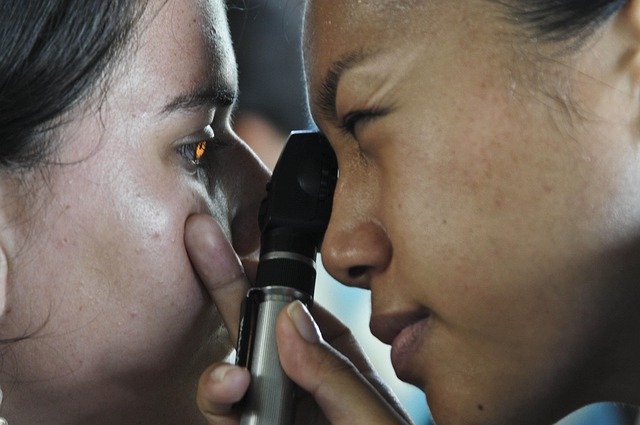Understanding Bladder Cancer: Key Signs That Indicate a Potential Problem
Bladder cancer often begins with subtle urinary changes that are easy to dismiss or confuse with infections. However, early detection is key — when caught early, bladder cancer is highly treatable. Understanding what signs to look for can help individuals seek medical attention before the disease progresses, improving both prognosis and treatment options.

What are the first urinary symptoms that may signal bladder cancer?
The initial signs of bladder cancer often manifest through changes in urinary habits. These symptoms can be subtle and easily overlooked, which is why awareness is crucial. Some of the first urinary symptoms that may signal bladder cancer include:
-
Changes in urination frequency: You may find yourself needing to urinate more often than usual, even when you haven’t increased your fluid intake.
-
Urgency: A sudden, strong urge to urinate that can be difficult to control.
-
Difficulty urinating: Despite the urgency, you may experience trouble starting the urine stream or feel like you can’t empty your bladder completely.
-
Weak urine stream: The force of your urine stream may be weaker than normal.
While these symptoms can also be indicative of other conditions, such as urinary tract infections or prostate issues in men, it’s essential to have them evaluated by a healthcare professional, especially if they persist or worsen over time.
How does blood in the urine relate to early detection?
Blood in the urine, also known as hematuria, is one of the most common and significant signs of bladder cancer. It’s important to understand that:
-
Hematuria can be visible or invisible: Sometimes, blood in the urine is visible, turning it pink, red, or cola-colored. However, in many cases, it’s only detectable through a urine test.
-
Intermittent occurrence: Blood may not be present in every urination, making it easy to dismiss when it stops.
-
Painless bleeding: Unlike other urinary conditions, blood in the urine due to bladder cancer is typically painless.
-
Early indicator: Hematuria can occur in the early stages of bladder cancer, making it a crucial symptom for early detection.
If you notice any blood in your urine, even if it only happens once, it’s crucial to consult a doctor immediately. While hematuria doesn’t always indicate cancer, it’s a symptom that should never be ignored, as early detection significantly improves treatment outcomes.
Why is monitoring frequent or painful urination important?
Frequent or painful urination are symptoms that, while not exclusive to bladder cancer, can be important indicators of the disease. Here’s why monitoring these symptoms is crucial:
-
Differentiation from UTIs: While frequent and painful urination are common in urinary tract infections (UTIs), persistent symptoms that don’t respond to antibiotics could signal bladder cancer.
-
Indication of tumor growth: As a tumor in the bladder grows, it can irritate the bladder wall, leading to increased frequency and pain during urination.
-
Early stage symptoms: These symptoms can occur in early-stage bladder cancer, making them valuable for early detection.
-
Quality of life impact: Frequent and painful urination can significantly affect daily life, prompting individuals to seek medical attention sooner.
If you experience persistent urinary frequency or pain, especially if accompanied by other symptoms like hematuria, it’s important to consult a healthcare provider for a thorough evaluation.
How can lower back or pelvic pain indicate possible bladder involvement?
While less common than urinary symptoms, lower back or pelvic pain can sometimes be associated with bladder cancer, particularly in more advanced stages. Understanding this connection is important:
-
Late-stage symptom: Pain in the lower back or pelvis often occurs when bladder cancer has grown through the bladder wall or spread to nearby tissues.
-
Nature of the pain: The pain may be dull and persistent, different from typical muscle aches or strains.
-
Combination with other symptoms: When lower back or pelvic pain occurs alongside urinary symptoms, it warrants immediate medical attention.
-
Differential diagnosis: While these pains can have many causes, in the context of urinary symptoms, they become more significant as potential indicators of bladder cancer.
It’s crucial to note that lower back or pelvic pain alone is rarely a sign of bladder cancer. However, when combined with urinary symptoms or unexplained weight loss, it should prompt a medical evaluation to rule out serious conditions, including bladder cancer.
What role does early screening play in improving bladder cancer outcomes?
Early screening plays a pivotal role in improving bladder cancer outcomes. Understanding its importance can motivate individuals to seek timely medical attention:
-
Improved survival rates: When detected early, bladder cancer has a significantly higher five-year survival rate compared to advanced stages.
-
Less invasive treatments: Early-stage bladder cancer often allows for more conservative treatment options, potentially avoiding radical surgeries.
-
Targeted screening for high-risk groups: Individuals with risk factors such as smoking, exposure to certain chemicals, or a family history of bladder cancer may benefit from regular screening.
-
Urine cytology and cystoscopy: These are common screening methods that can detect cancer cells or abnormal growths in the bladder before symptoms become apparent.
-
New molecular tests: Emerging technologies in urine-based molecular testing offer promising advancements in early detection and monitoring of bladder cancer.
Early screening and prompt attention to symptoms are crucial in the fight against bladder cancer. By understanding the key signs and the importance of early detection, individuals can take proactive steps towards better health outcomes. Remember, while these symptoms can be indicative of bladder cancer, they may also be caused by other conditions. Always consult with a healthcare professional for proper diagnosis and treatment.
This article is for informational purposes only and should not be considered medical advice. Please consult a qualified healthcare professional for personalized guidance and treatment.




